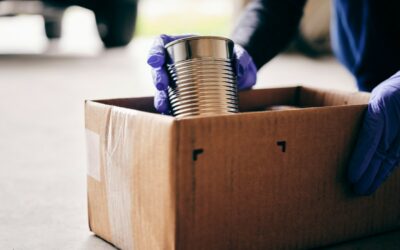Add Automation to Mobile Surveys with Data Collection Workflows
Ready to take your mobile surveys to the next level? Here’s how you can use mobile data collection workflows to automate surveys and data intake.
Your organization uses SMS workflows to get the most value out of its communication strategy. Yet, despite your best efforts, you may be missing out on a golden opportunity to leverage mobile data collection workflows to understand your target audience more efficiently than ever before.
Data collection workflows can help you automate mobile surveys, to the point where you can reduce or eliminate repetitive tasks and improve customer engagement. These workflows will get better survey responses from your target audience, and you can use those responses to learn what it takes to meet their expectations now and in the future.
How to set up mobile data collection workflows
Mobile data collection workflows are easy to set up, and they can deliver long-lasting benefits. Here are three steps you can use to integrate data collection workflows into your mobile surveys.
-
Design your workflow
Figure out what data you want to capture from the mobile survey and design your workflow accordingly. As part of the design cycle, it helps to consider your target audience. You should also assess the desired outcome of the survey and what you want to learn from respondents.
It can be beneficial to set up a flowchart or diagram to give you a visual representation of your workflow. This can help you organize the steps involved in conducting the mobile survey and ensure you account for these steps when you build the workflow.
-
Build your workflow
Construct your mobile data collection workflow from start to finish. Your workflow should include:
- Start and end points: Determine which event will trigger the workflow and how you will know when it has achieved the desired outcome.
- What is necessary to keep the workflow moving forward: Identify any SMS platforms, APIs, or other tools necessary to complete your workflow.
- Tasks and activities: List any tasks or activities that must be completed to finish a workflow. For example, a mobile survey respondent usually must receive and respond to the first survey question before they can answer the next one.
- Roles: Figure out which tasks can be automated and which ones require human approval.
Building a mobile data collection workflow requires communication and collaboration among relevant stakeholders within your organization. Any departments and employees involved in your communication strategy should work together to create a workflow that meets the needs of all stakeholders.
-
Test your workflow
Develop test cases that allow you to analyze your mobile data collection workflow. For example, if you plan to conduct a mobile survey to collect data from 1 million respondents, first conduct tests to see how long it takes to initiate your workflow. You can also use these tests to verify that the SMS survey is sent and delivered properly, that it is easy for recipients to provide responses, and that it allows your organization to seamlessly retrieve these responses.
Once you conduct testing, establish a baseline for your workflow. You can then track mobile survey response rates and other pertinent metrics relating to this workflow and find ways to optimize it.
How do Mobilize customers use workflows to gather data?
Check out our free download! [link to Food Bank Use Case Value Add Form]
3 tips to automate your mobile data collection workflows
In terms of automating mobile surveys, data collection workflows can make a world of difference. Here are a few steps you can take to drive data collection automation and efficiency:
-
Use templates
Create a template that lets you share the same information with every survey respondent. Your template can be personalized, so it includes the first name, last name, or other contact information from the recipient. That way, you can quickly send a personalized mobile survey to millions of recipients.
If you use a template, verify that your SMS message is error-free. Proofread any content included in your template and ensure it hits the mark with your target audience before you incorporate that template into your communication strategy.
-
Keep your message simple
Be clear and direct in any message you send to your target audience. An ambiguous SMS notification can do more harm than good, as it can confuse your audience and reduce the likelihood that you’ll get enough responses. Thus, you should write your survey questions with your audience top of mind to ensure that each notification is straightforward and simple to understand.
Avoid quotation marks around words you require for mobile survey responses, too. However, capitalizing all potential survey answers will help audience members know exactly what to write in their response.
-
Use the best question type for the data you are gathering
Make sure the question type you use is the best way to gather data. For example, you would use a short answer question to gather a name or email so people can type it in, however you would not use this question type when asking what industry a person is. A better question type would be a dropdown menu, which forces the person taking the survey to select from a predetermined list.
What survey question types does Mobilize offer? Text DATA to 833-428-1249 to see an example!
Ready to integrate mobile data collection workflows into your communication strategy? Mobilize can help!
Mobilize offers a real-time text message communication platform that lets your organization instantly communicate with hundreds, thousands, or millions of contacts. Our platform can help you achieve an open rate of 98% with mobile surveys. We also provide mobile data collection workflow tips and recommendations, so you can craft mobile surveys that generate timely, accurate audience insights.
Contact us today to learn about our platform and how we can help you get started with mobile data collection workflows.



